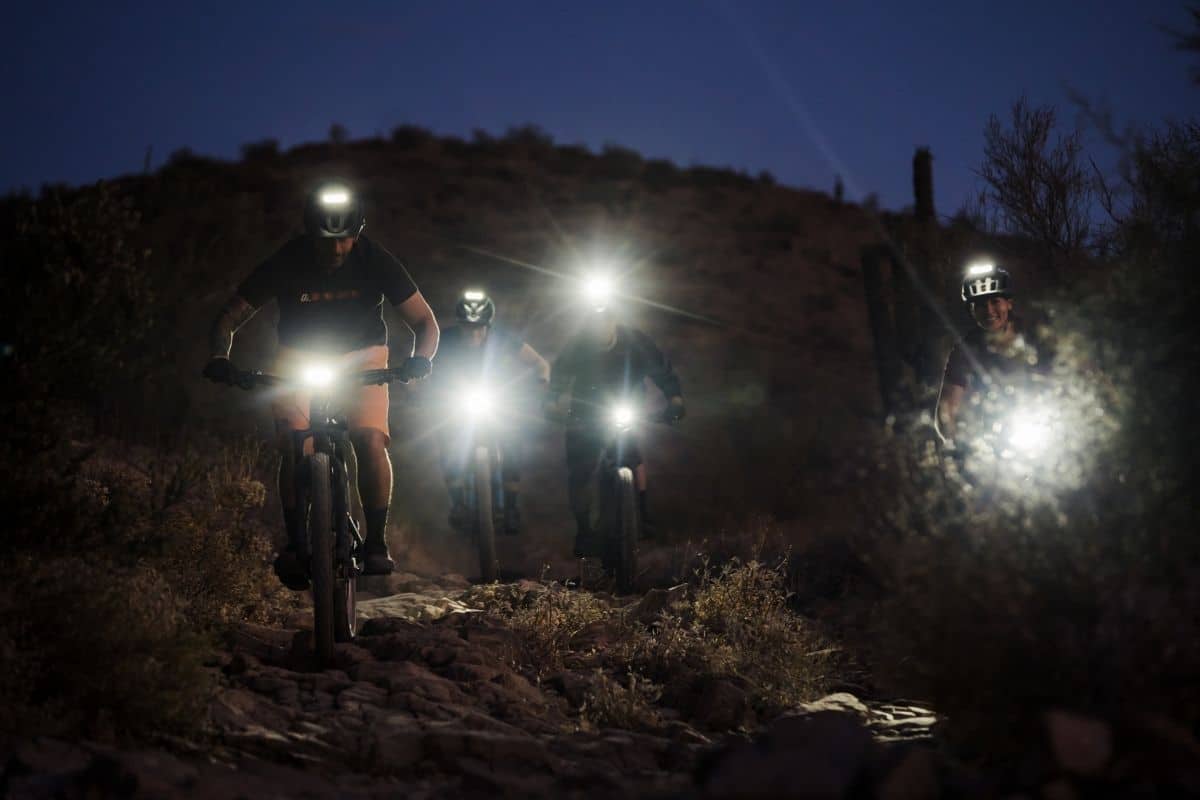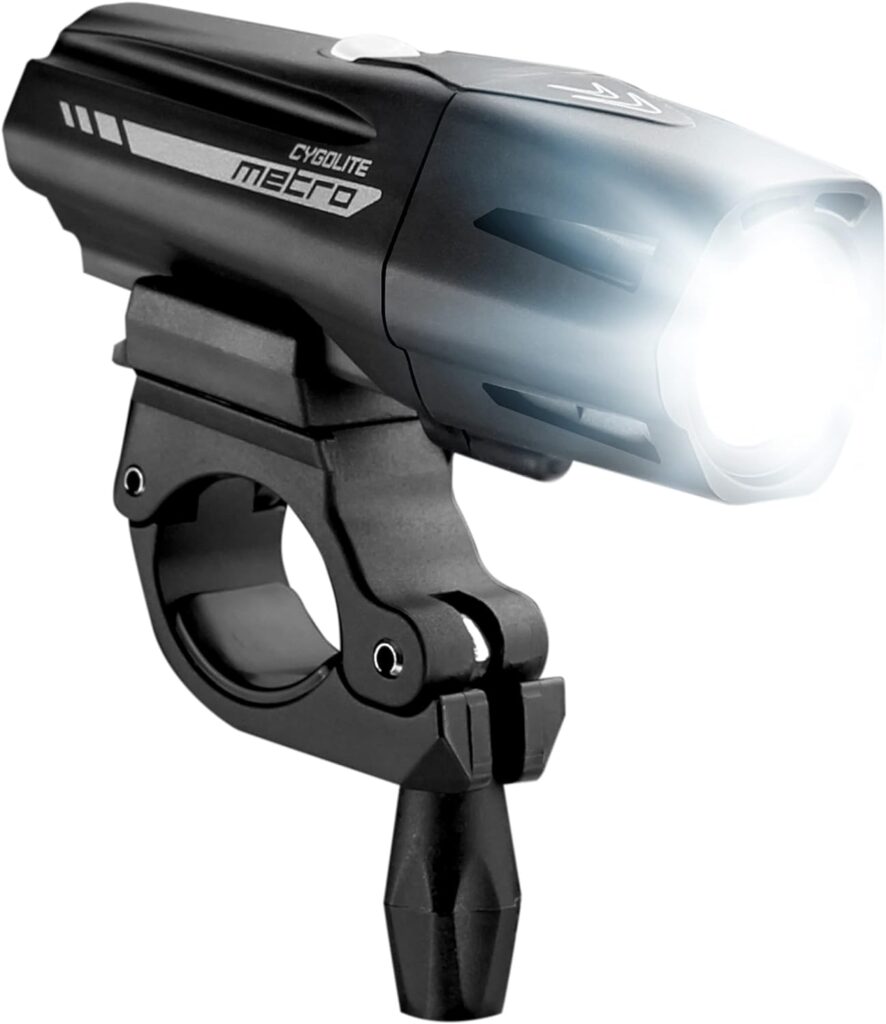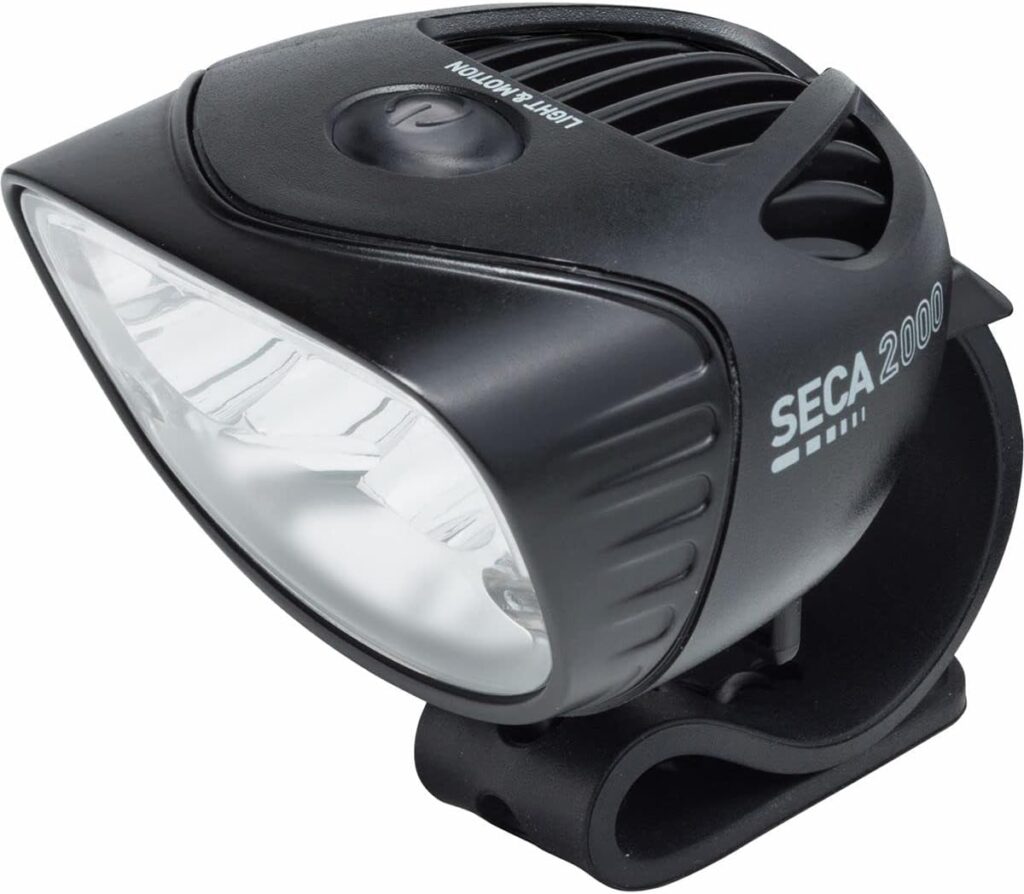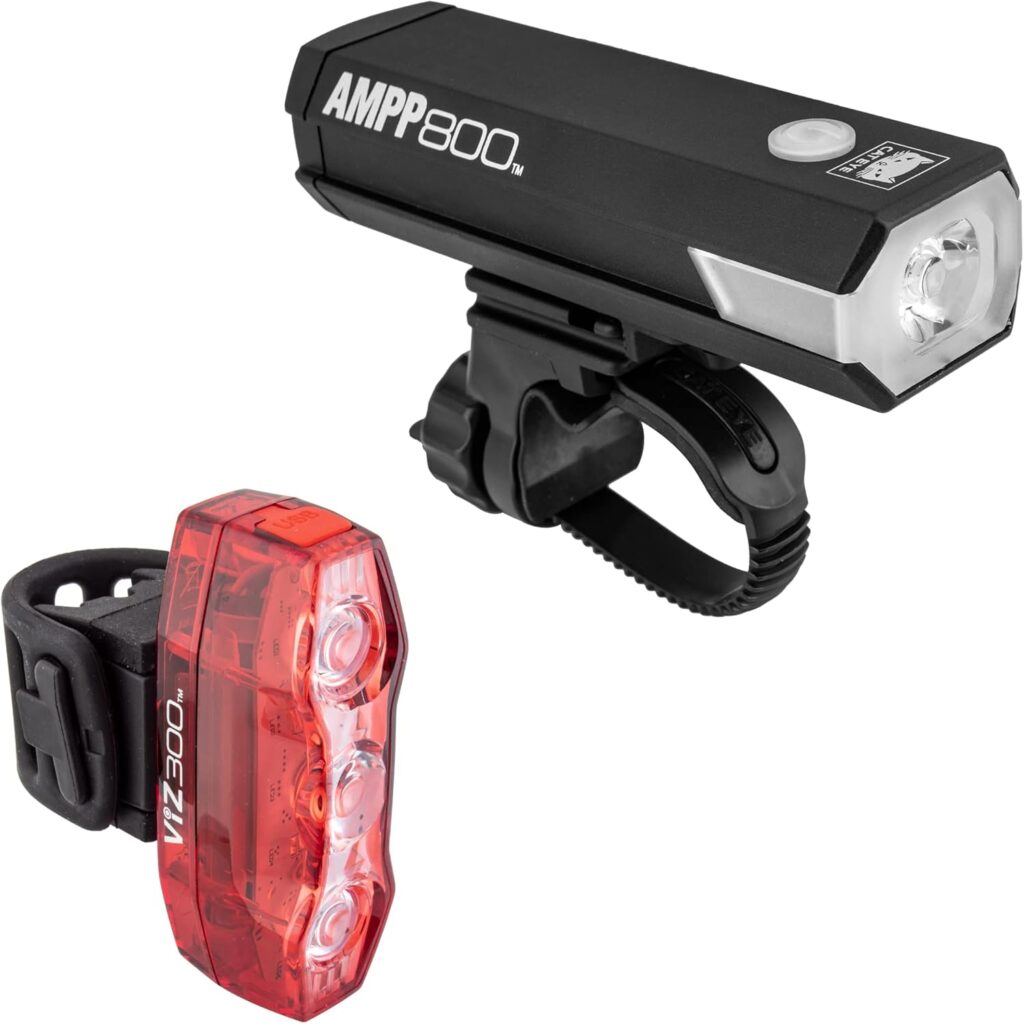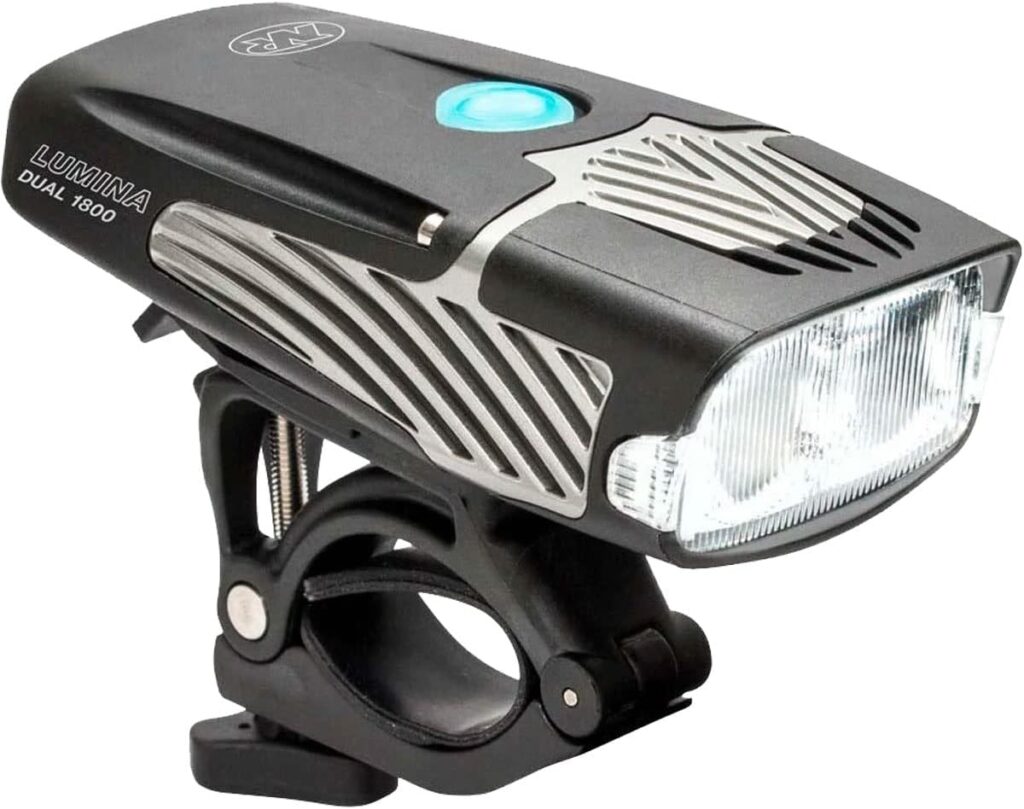Discover the best mountain bike lights available online in 2025. Honest reviews of helmet and handlebar lights for every budget based on actual trail testing.
I used to be that guy who’d hang up his bike when daylight saving ended. The thought of pedaling through pitch-black forest trails? Hard pass.
Then three winters back, my buddy Dave practically dragged me out for a night session on our local trails. I’ve been thanking him ever since.
There’s something weirdly magical about night riding that’s tough to explain until you experience it. Trails I’d bombed down a hundred times suddenly felt brand new. Every rock, root, and drop becomes a fresh challenge when you’re seeing it through the narrow beam of your lights.
And the forest at night? It has this peaceful vibe you never get during the day – no hikers, no crowds, just you and your riding buddies having the whole place to yourselves. The silence broken only by tires gripping dirt and the occasional “WHOOP!” echoing through the trees after clearing a tricky section.
Since that first night ride, I’ve blown way too much money testing different light setups – everything from $50 specials to systems priced higher than my first bike. After countless rides through mud, rain, and some genuinely miserable winter conditions, here’s what I’ve learned works and what doesn’t out on actual trails.
Night Riding Light Basics: What You Actually Need
Before dropping recommendations, let’s get clear on what makes a good night riding setup:
Bar-mounted lights give you that wide flood beam illuminating the whole trail ahead. These are your main light source and typically have a wider beam pattern to illuminate the terrain directly in front of you.
Helmet lights point wherever you’re looking, not just where your handlebars are aimed. These are absolutely crucial for cornering and technical sections and usually feature a more focused beam pattern that projects farther down the trail.
Most serious night riders use both. If you’re watching your wallet, start with a solid bar light and add a helmet light when you can. Many lights can work in either position, but it’s important to understand which mounting option each light is optimized for.
Best Helmet Lights Available in 2025
Magicshine RN 1200 – Best Overall Helmet Light
$38.68
Magicshine has been specializing in lighting solutions for over 25 years, and their RN 1200 is an exceptional light that works perfectly for helmet mounting. This model is available from online retailers and select bike shops.
At around 1200 claimed lumens (which feels accurate in real-world testing), this light is bright enough to be your only light on familiar trails. The beam pattern is ideally focused for helmet use, creating a tight spotlight that perfectly complements a bar-mounted flood beam.
The lightweight design makes it comfortable for extended helmet use, and the included mounting kit secures it firmly to most helmets. Battery life extends to seven hours on the lower 300-lumen be-seen setting, which gives you plenty of runtime for longer rides if you’re willing to dial back the brightness. The light even doubles as a power bank to charge your devices in a pinch.
With an IPX7 rating to handle everything winter can throw at it, this light has been completely reliable through rainstorms and snowy conditions. For under $40, this light delivers performance that rivals options twice its price, making it my top recommendation for both budget-conscious night riders and those looking for the best helmet-specific light.
Great Value Bike Light – Magicshine RN1200 Review
Cygolite Metro Pro 1100 – Best Mid-Range Helmet Light
$119.95
The Cygolite Metro Pro 1100 balances performance and value, making it an excellent helmet light option for serious riders. You can purchase this model from bicycle retailers and online stores.
What makes this stand out for helmet use is its compact size and focused beam pattern that provides excellent throw distance. I’ve been particularly impressed with the steady pulse mode, which maintains constant illumination while adding pulses that make trail features pop without disorientation. This feature has helped me spot those sneaky camouflaged roots that would have definitely sent me over the bars.
Cygolite offers a dedicated helmet mount kit that works perfectly with this light, securing it firmly even on rough terrain. The 1100 lumen output is plenty for helmet duty, and runtime has improved to about 2.5 hours on high in real-world conditions.
Cygolite Metro 1100 Lumen Bicycle Light Review
Light & Motion Seca Race 2000 – Best Premium Helmet Light
$129.99
For those who demand the absolute best in helmet lighting, the Light & Motion Seca Race 2000 is the gold standard. Available at premium cycling retailers and the manufacturer’s website, this light justifies its higher price with exceptional performance.
The Seca Race features a sophisticated 4-LED array that creates an unmatched beam pattern, combining both spot and flood beams that allow you to see clearly in any terrain. At 2000 lumens, it’s powerful enough for even the most technical night riding at speed.
What sets this light apart for helmet use is its dedicated helmet mount included in the package, which provides rock-solid stability while remaining comfortable for long rides. The innovative “race mode” allows you to toggle between high and medium settings with a single click – perfect for switching between technical descents and climbs without fumbling with multiple button presses.
Battery life is impressive at 1.5 hours on full power and nearly 3 hours on medium setting. The light features regulated output so it won’t dim during your ride, maintaining consistent brightness until the battery is nearly depleted.
Light And Motion Seca 2000 Race Low and High Beam Road Test
Best Handlebar Lights Available in 2025
NiteRider Lumina Micro 900 – Best Overall Bar Light
$89.99
The NiteRider Lumina Micro 900 is one of the most versatile handlebar lights available today. According to NiteRider, it’s designed primarily for bar mounting but its “light weight at 130 grams makes it quite suitable as a helmet mountable option as well.” You can find this model at most bike shops and online retailers.
What makes this light stand out for handlebar use is its compact size combined with impressive output. The single LED design creates a focused beam that illuminates the trail effectively without excessive weight on your bars. The included handlebar mount fits bars up to 35mm in diameter, making it compatible with virtually any modern mountain bike.
Battery life is honest – I get about 2 hours on high (900 lumens) and nearly 4.5 hours on medium (450 lumens), which is plenty bright for most conditions. The five lighting modes give you options for every situation, from maximum brightness for technical descents to a battery-saving 30-lumen walk mode that runs for an impressive 60 hours.
One of my favorite features is NiteRider’s Intellicharge technology, which reduces charge time significantly. The light also includes a lock mode feature that prevents accidental activation during transport – just press and hold the power button for 8-10 seconds to lock or unlock. This has saved my battery multiple times when the light was bouncing around in my pack.
NiteRider Lumina Micro 900 – Best Mountain Bike Light Under $70 bucks
Cateye AMPP 800 – Best Value Bar Light
$97.99
The Cateye AMPP 800 is consistently reviewed as one of the best value mountain bike lights for handlebar mounting. Available at bicycle shops worldwide and through online cycling retailers.
The beam pattern leans strongly toward flood rather than spot, making it ideal for handlebar use. The single LED and OptiCube lens produces a slightly wider focus with a crisp white light that’s perfect for picking out detail on the trail ahead.
Battery life has improved to about 2 hours on high, but I typically run it on medium which stretches to nearly 4 hours—plenty for after-work rides. The mode memory feature means it turns on at the last used brightness level, and the charging indicator provides precise feedback on remaining power.
The construction feels solid, with an aluminum body that dissipates heat effectively. For riders on a budget or those just getting into night riding, this updated light offers excellent value in 2025.
CatEye Ampp 800 (Test)
NiteRider Lumina Dual 1800 – Best High-Performance Bar Light
$179.99
The NiteRider Lumina Dual 1800 has established itself as an outstanding performer that outclasses many more expensive lights. You can find this at specialty bike shops and through online retailers.
What makes this light a standout for handlebar use is its exceptional beam pattern. Instead of a single intense spot, the dual LED design produces a natural-looking spread of light across the trail that perfectly illuminates the terrain directly in front of you. At 1800 lumens, it’s bright enough for technical trail riding at nearly daytime speeds.
The secure mounting system is one of this light’s best features, preventing it from gradually tilting downward on rough descents—a common problem with rubber strap mounts. It fits handlebars up to 35mm in diameter and holds solid over the roughest terrain.
Battery life is honest—it can run at full power for 45 minutes and 1500 lumens for 1.5 hours, which gives you plenty of runtime for most night rides if you’re smart about using the right brightness setting for different trail sections. The 8-step power indicator gives a precise reading of remaining runtime, helping avoid unexpected darkness halfway through a ride.
SUPER BRIGHT NEW LIGHT! NiteRider Lumina Dual 1800
E-Bike Specific Lights Available in 2025
If you’re riding an e-mountain bike, you can tap into your existing battery instead of carrying separate light batteries—a growing trend in 2025 as e-bike adoption continues to rise.
Unfortunately, specialized e-bike lights like Lupine SL F and Lezyne E-Drive models aren’t as widely available through mainstream retailers. Look for these models at specialty e-bike shops or directly from the manufacturers’ websites. Alternatively, I recommend using any of the standard handlebar lights mentioned above and preserving your e-bike’s battery for propulsion.
How to Choose Mountain Bike Lights in 2025: What Actually Matters
After extensive testing of the latest 2025 models, here’s what I’ve learned really matters when selecting lights:
1. Beam Pattern Still Matters More Than Lumens
Despite manufacturers continuing to push higher lumen numbers each year, beam pattern remains the most crucial factor in real-world performance. A well-designed 1800-lumen light often outperforms a poorly designed 3000-lumen light on actual trails.
For bar lights, look for even illumination with good width. For helmet lights, a more focused beam that projects further down the trail works best. This combination provides the most natural trail visibility.
2. Improved But Still Realistic Battery Life
Battery technology has improved in 2025 models, but you should still be skeptical of manufacturer claims. In real-world use—especially in cold weather—expect about 80-85% of the claimed runtime. For a typical 2-hour night ride, I look for lights with at least 2.5 hours of claimed runtime on the setting I plan to use most.
3. Mount Quality Is Critical
As lights have gotten more powerful and lighter, mount quality has become even more important. A super bright light is useless if it’s bouncing around or pointing at the sky. Quality mounts that maintain position over rough terrain are worth paying extra for, especially with the increasingly technical trails many riders are tackling at night.
For helmet lights, look for mounts that are secure yet lightweight. Many manufacturers now offer specific helmet mounting brackets that provide better stability than generic straps. NiteRider, for example, offers their Lumina Helmet Mount and Stick-On Mount specifically designed for helmet mounting their lights.
For handlebar lights, look for mounts that can accommodate various bar diameters (up to 35mm) and won’t slip during rough rides. Some premium lights now offer metal clamp mounts rather than rubber straps for maximum stability.
4. Advanced Thermal Management
With today’s high-output LEDs, thermal management has become more sophisticated. Good thermal design prevents the light from dimming as it gets hot (thermal throttling) while maintaining reasonable surface temperatures for comfort during battery swaps or adjustments.
The WORLDS Most POWERFUL Bike Light – Magicshine Monteer 12000
My Current 2025 Night Riding Setup
After testing the latest models available this year, here’s what I personally use for night riding:
Helmet: NiteRider Lumina Micro 900 Bars: NiteRider Lumina Dual 1800
This combination gives me confidence on even the most technical local trails. The Lumina Micro 900 on my helmet provides a focused beam that illuminates wherever I look, while the Lumina Dual 1800 on my handlebars creates a wide flood pattern that lights up the trail directly in front of me. On familiar terrain, I can ride nearly as fast at night as I do during daylight hours.
For more casual night rides or as a backup, I keep the Cateye AMPP 800 in my pack. I’ve loaned it to friends getting into night riding, and it consistently impresses at its price point.
Final Thoughts: Why Night Riding with Today’s Lights Is Better Than Ever
Night riding has completely transformed how I approach mountain biking year-round. Instead of dreading the shorter days of winter, I now look forward to weeknight rides under the stars. There’s something magical about the focused experience of following your light beam through the forest, with no distractions beyond what your lights illuminate.
The technology available in 2025 has made night riding more accessible and enjoyable than ever before. Lights are brighter, run longer, and cost less than comparable models from just a few years ago. Self-contained units have eliminated the need for cumbersome external battery packs and cables for many applications, while advancements in optics provide better trail illumination with less power.
If you’ve never tried night riding, now is the perfect time to start. Grab one of the budget-friendly options I’ve recommended and give it a shot. Just remember these key tips:
- Always carry a backup light (even a small one)
- Dress warmer than for daytime rides – temperatures drop quickly after sunset
- Let someone know your route and expected return time
- Start on familiar trails before tackling challenging terrain at night
- Take advantage of the travel lock features to prevent battery drain between rides
The right lights transform night riding from a sketchy experience into one of the most enjoyable aspects of mountain biking. With the quality of lights available in 2025, there’s no reason to put your bike away when the days get shorter. The night is calling—answer it with confidence.
[This article contains affiliate links. If you purchase through these links, I may earn a small commission at no extra cost to you. I only recommend products I’ve personally tested and believe in.]

